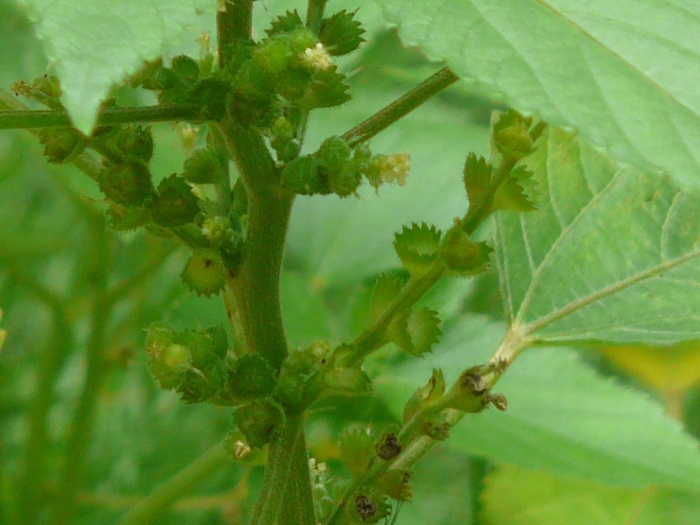Toothed Bract Indian Copperleaf
(Acalypha lanceolata)
Toothed Bract Indian Copperleaf (Acalypha lanceolata)
/
/

Dinesh Valke
CC BY-SA 2.0
Image By:
Dinesh Valke
Recorded By:
Copyright:
CC BY-SA 2.0
Copyright Notice:
Photo by: Dinesh Valke | License Type: CC BY-SA 2.0 | License URL: https://creativecommons.org/licenses/by/2.0/ | Uploader: Dinesh Valke | Publisher: Flickr |



Estimated Native Range
Summary
Acalypha lanceolata, commonly known as Toothed Bract Indian Copperleaf, is an evergreen shrub native to a variety of habitats including tropical and subtropical forests, savannahs, and sometimes disturbed areas in South and Southeast Asia, the Pacific Islands, East Africa, and Australia. It typically grows to a height of 2-4 feet (0.6-1.2 meters) and a width of 0.5-1 feet (0.2-0.3 meters). This shrub is characterized by its lance-shaped leaves and small, inconspicuous flowers that are often overshadowed by the colorful, toothed bracts that surround them. The bracts can be a range of colors, including shades of red, copper, or purple, adding to the plant’s ornamental value.
Toothed Bract Indian Copperleaf is valued for its foliage and is often used in tropical and subtropical gardens as a ground cover, border planting, or for adding color contrast. It is relatively easy to maintain and can be pruned to shape. While it prefers full sun to part shade, it is adaptable to a range of light conditions. It requires medium water and thrives in soils with medium drainage. Gardeners should be aware that it can become leggy if not pruned regularly and may require staking in windy areas. It is not known to have serious disease or pest problems, but it can be sensitive to frost.CC BY-SA 4.0
Toothed Bract Indian Copperleaf is valued for its foliage and is often used in tropical and subtropical gardens as a ground cover, border planting, or for adding color contrast. It is relatively easy to maintain and can be pruned to shape. While it prefers full sun to part shade, it is adaptable to a range of light conditions. It requires medium water and thrives in soils with medium drainage. Gardeners should be aware that it can become leggy if not pruned regularly and may require staking in windy areas. It is not known to have serious disease or pest problems, but it can be sensitive to frost.CC BY-SA 4.0
Plant Description
- Plant Type: Shrub
- Height: 2-4 feet
- Width: 0.5-1 feet
- Growth Rate: Moderate
- Flower Color: N/A
- Flowering Season: Summer
- Leaf Retention: Evergreen
Growth Requirements
- Sun: Full Sun, Part Shade
- Water: Medium
- Drainage: Medium
Common Uses
Bird Garden, Drought Tolerant, Potted Plant
Natural Habitat
native to a variety of habitats including tropical and subtropical forests, savannahs, and sometimes disturbed areas in South and Southeast Asia, the Pacific Islands, East Africa, and Australia
Other Names
Common Names: Red-Hot Cat’s Tail
Scientific Names: , Acalypha lanceolata, Acalypha wightiana var. lanceolata, Ricinocarpus lanceolatus, Urtica pilosa,
GBIF Accepted Name: Acalypha lanceolata Willd.